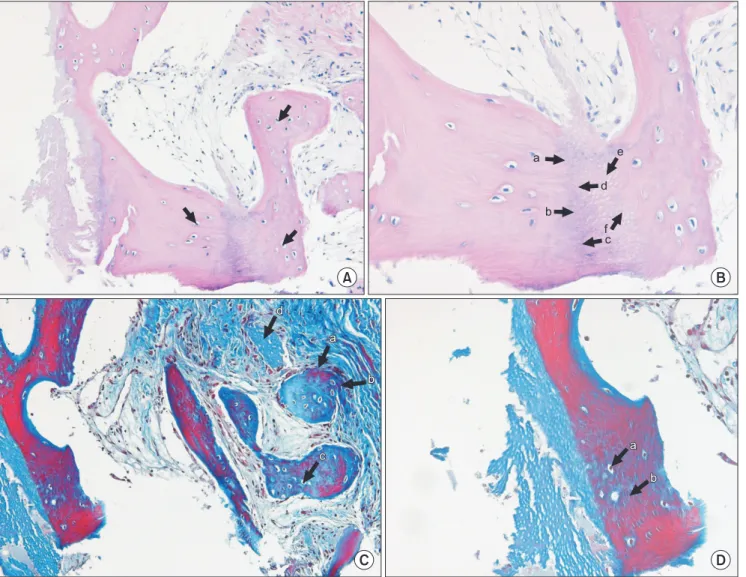An alternative treatment option for a bony defect from large odontoma using recycled demineralization at chairside
JuHyon Lee 1 , Eun-Young Lee 2 , Eun-Jin Park 3 , Eun-Suk Kim 1
1 Department of Oral and Maxillofacial Surgery, Dankook University Jukjeon Dental Hospital, Yongin,
2 Department of Oral and Maxillofacial Surgery, Chungbuk National University College of Medicine, Cheongju,
3 Department of Prosthodontics, Ewha Womans University School of Medicine, Seoul, Korea
Abstract (J Korean Assoc Oral Maxillofac Surg 2015;41:109-115)
Odontoma is the most common odontogenic benign tumor, and the treatment of choice is generally surgical removal. After excision, bone grafts may be necessary depending on the need for further treatment, or the size and location of the odontoma. Although the osteogenic capacity of a demineral- ized tooth was verified as early as 1967 by Urist and many other investigators, the cumbersome procedure, including a long demineralization time, may be less than comfortable for clinicians. A modified ultrasonic technology, with periodic negative pressure and temperature control, facilitated rapid and aseptic preparation of demineralized teeth for bone grafts. This approach reduces the demineralization time dramatically (≤80 minutes), so that the graft material can be prepared chairside on the same day as the extraction. The purpose of this article is to describe two cases of large compound odonoto- mas used as graft material prepared chairside for enucleation-induced bony defects. These two clinical cases showed favorable wound healing without complications, and good bony support for future dental implants or orthodontic treatment. Finally, this report will suggest the possibility of recycling the benign pathologic hard tissue as an alternative treatment option for conventional bone grafts in clinics.
Key words: Odontoma, Recycled demineralization
[paper submitted 2014. 12. 25 / revised 2015. 2. 13 / accepted 2015. 2. 23]
teeth 4,5 . Radiological characteristics include the presence of an irregular mass surrounded by a thin radiolucent capsular space and the presence of radiopaque compact bone 4,5 .
The treatment of choice has been surgical removal, depend- ing on the size and location of the odontoma, and bone grafts are necessary to reconstruct the alveolar ridge and prepare the region for future dental implants or orthodontic treatment 2-5 .
The graft material for the defect is categorized into 4 types;
autogenous, allogenic, xenogenic bones, and alloplastic mate- rials. Although autogenous bone is considered the gold stan- dard among graft materials due to its osteoinductivity, osteo- conductivity, and osteogenicity, it has some limitations, such as its high morbidity and potential resorption. To compensate for these limitations, extracted human teeth have been spot- lighted as a novel graft material due to their physicochemical to bone. The osteogenic capacity of demineralized teeth was verified as early as 1967 6 , and it is generally accepted that autogenous and allogenic demineralized teeth are osteoinduc- tive or osteoconductive graft materials 6-8 . Commercial mate- rials based on demineralized teeth have been recently used in
I. Introduction
Odontoma is the most common odontogenic benign tu- mor 1-3 containing “tooth-like tissues” 2,3 . It is not considered a true neoplasm, and is thus classified as a hamartoma or a malformation of odontogenic tissues 2-4 .
The etiology of this disease is still unknown, but many fac- tors have been considered as playing important roles in its pathogenesis, including local trauma, infection, and genetics.
The diagnosis may be made during routine radiological ex- ams due to the delayed eruption of the primary or permanent
Eun-Suk Kim
Department of Oral and Maxillofacial Surgery, Dankook University Jukjeon Dental Hospital, 152 Jukjeon-ro, Suji-gu, Yongin 448-701, Korea
TEL: +82-31-8005-2595 FAX: +82-31-8021-7270 E-mail: eskimos@dankook.ac.kr
ORCID: http://orcid.org/0000-0002-2718-2989
This is an open-access article distributed under the terms of the Creative Commons Attribution Non-Commercial License (http://creativecommons.org/licenses/by-nc/3.0/), which permits unrestricted non-commercial use, distribution, and reproduction in any medium, provided the original work is properly cited.
CC



